Parametric Vessel One:
My first print was generated by the python blocks we practiced in class, however I added a fourth input value for both the radius, number of sides, and z-axis parameters. Adding the fourth value allowed for more detailed changes, noticeably along the z-axis. I kept the number of sides the same for each of the four polygon shapes along the z-axis to maintain a smooth and clean loft. The structure also took the ZYX rotation transform we added in class, again keeping a gentle twist angle to maintain a subjectively elegant appearance. The vessel was sliced in dynamic quality and 0% infill density. The actual print took about 4 hours and I, thankfully, encountered no issues with it.
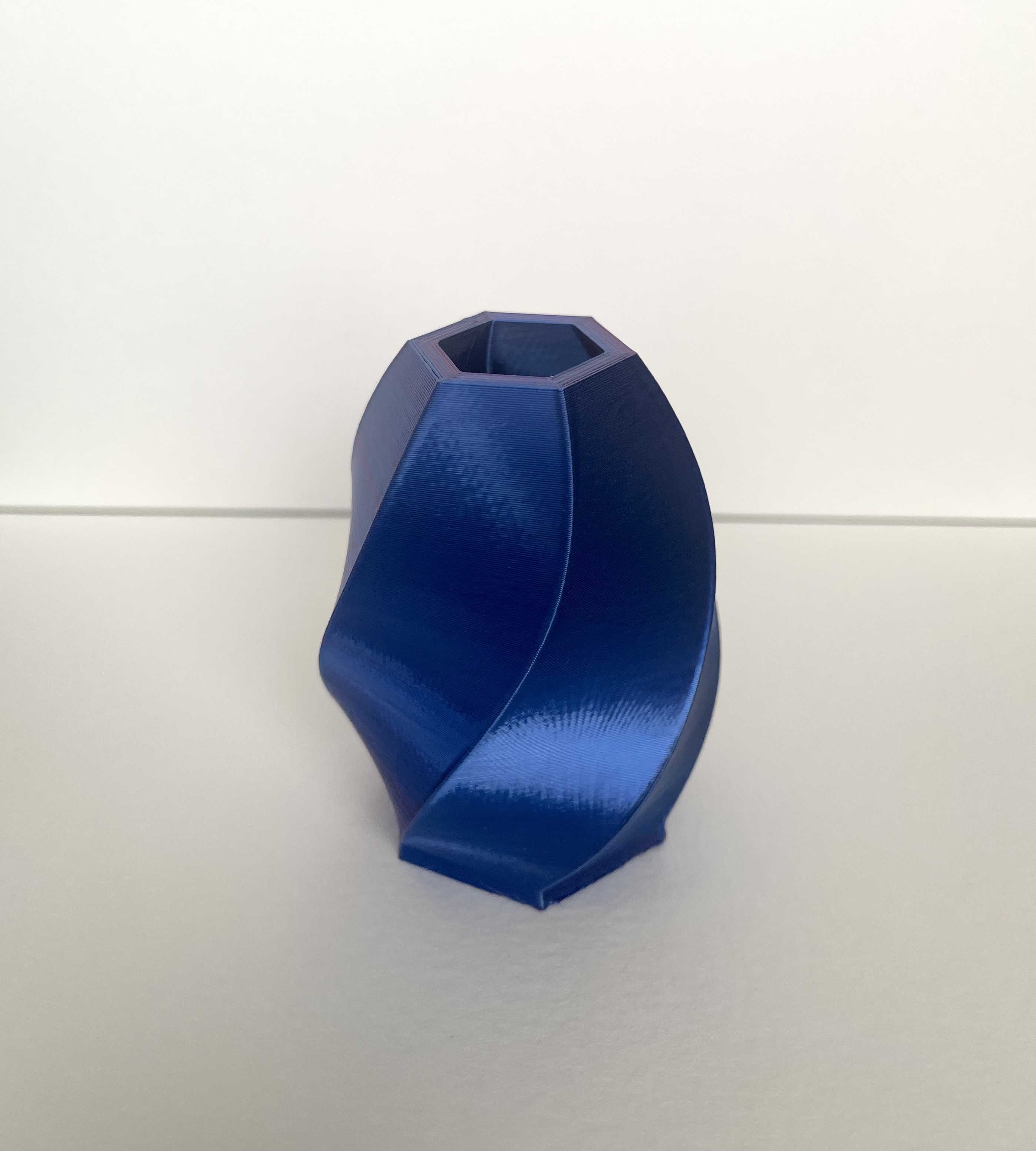
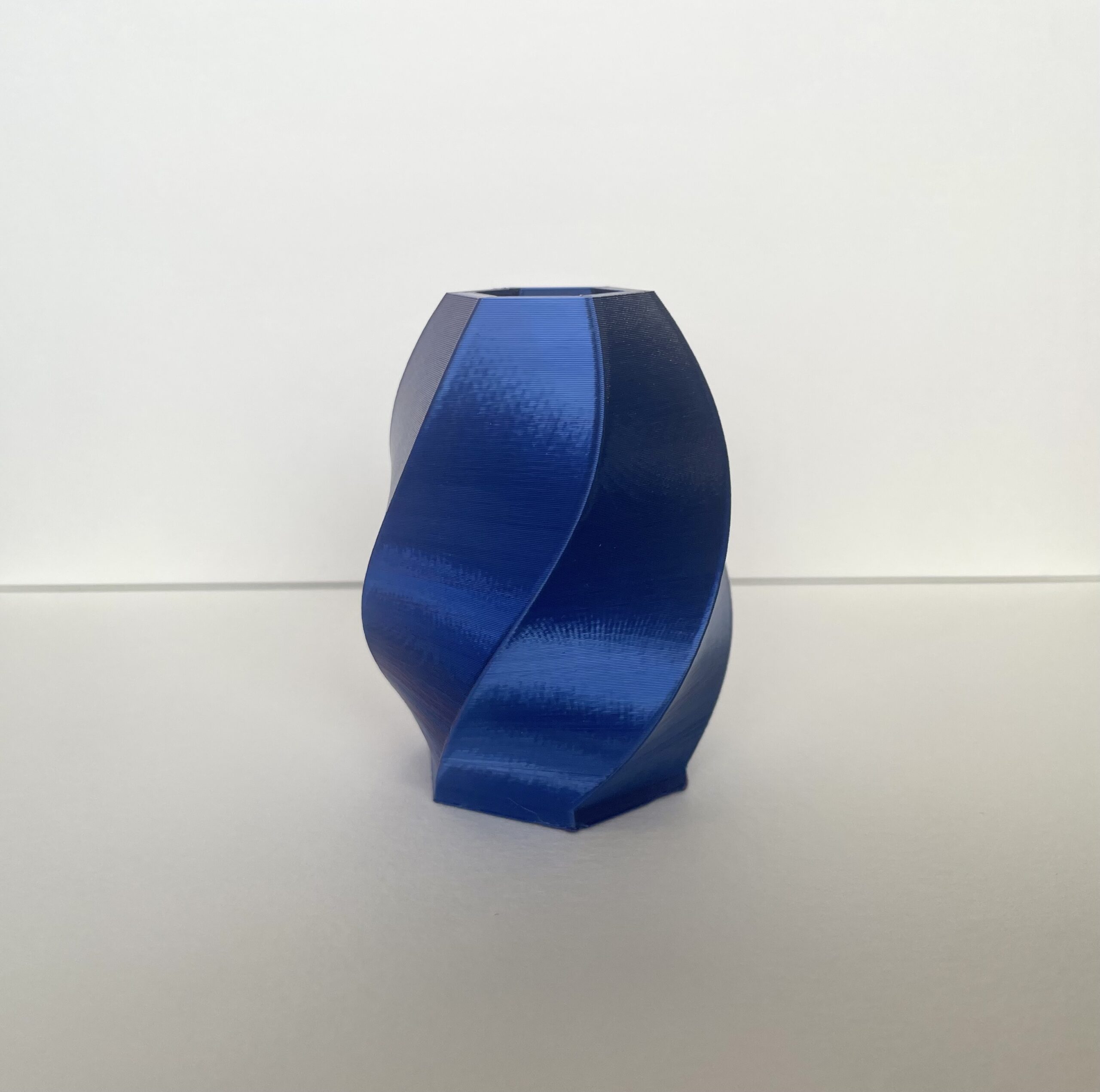
Parametric Vessel Two:
My second print was created through the use of a flower shaped radial function. This function is structured very similarly to how the rest were implemented in class. The only parameter difference required was the petal count instead of the side count we used for the polygon radial functions. This object also used four different input shapes along the z-axis meanwhile transforming with the same ZYX rotation twist that was used on my first vessel. Though it was a fun one to create, it wasn’t exactly my favorite print aesthetically. This vessel was sliced in standard quality and 0% infill density, and took about 3 hours to print with no printer blocks.

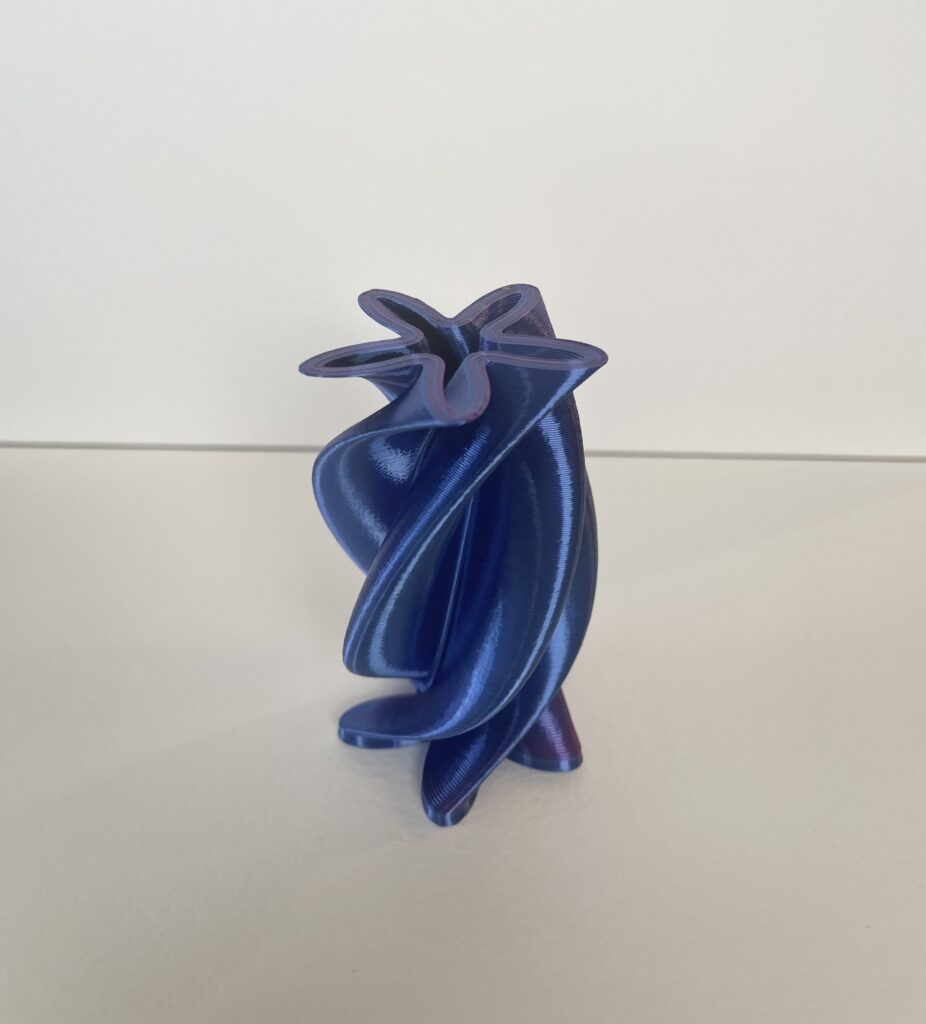
Parametric Vessel Three:
The third print used the radial functions that we implemented in class, however, it inherited a slightly different rotation transform, a radial twist. This function essentially allowed for a less controlled twist by fixing a small degree and radial distance change along the X and Y axis, creating an almost “tornado-like” rotation. I was very pleased with the way this parametric vessel turned out. Though it is my favorite of all three, it was the print that gave me the most issues. When I had first attempted to print the object, everything but the inner vase shell was sticking to the vase-bottom correctly. I re-sliced the vessel using different qualities and even slowed down the extrusion/print, but it failed every single time with the same issue. After my third failed attempt, I decided to remake the vessel in Grasshopper/Rhino and was finally able to print it with no problems. I’m assuming the original version of the object was baked before running the Solid Union block , preventing the inner vase shell from sticking to the bottom. Once I debugged the issue, the print took about 2.5 hours to complete. No supports were used for either of the three prints, but an adhesion plate was used for the final two prints.
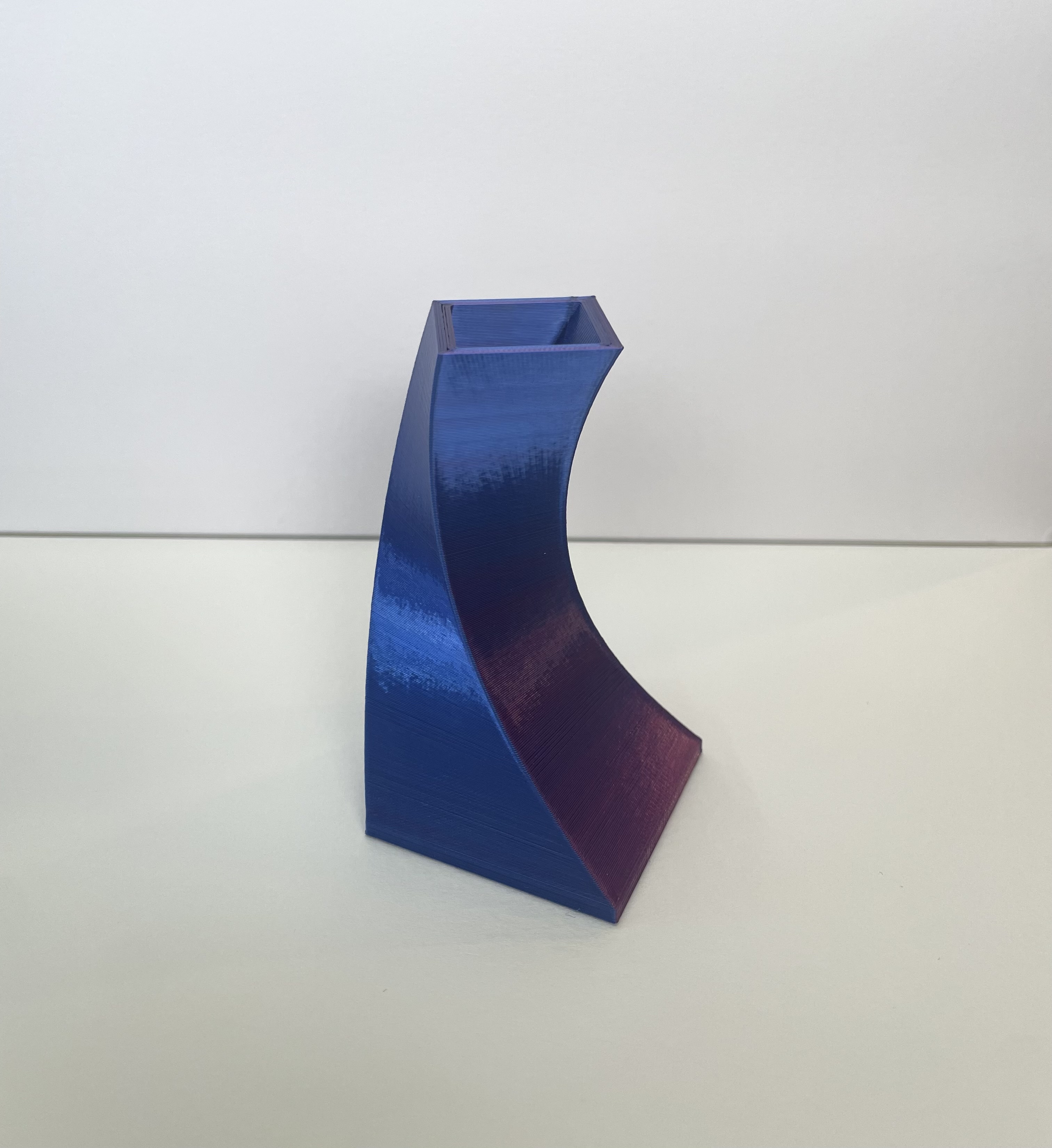
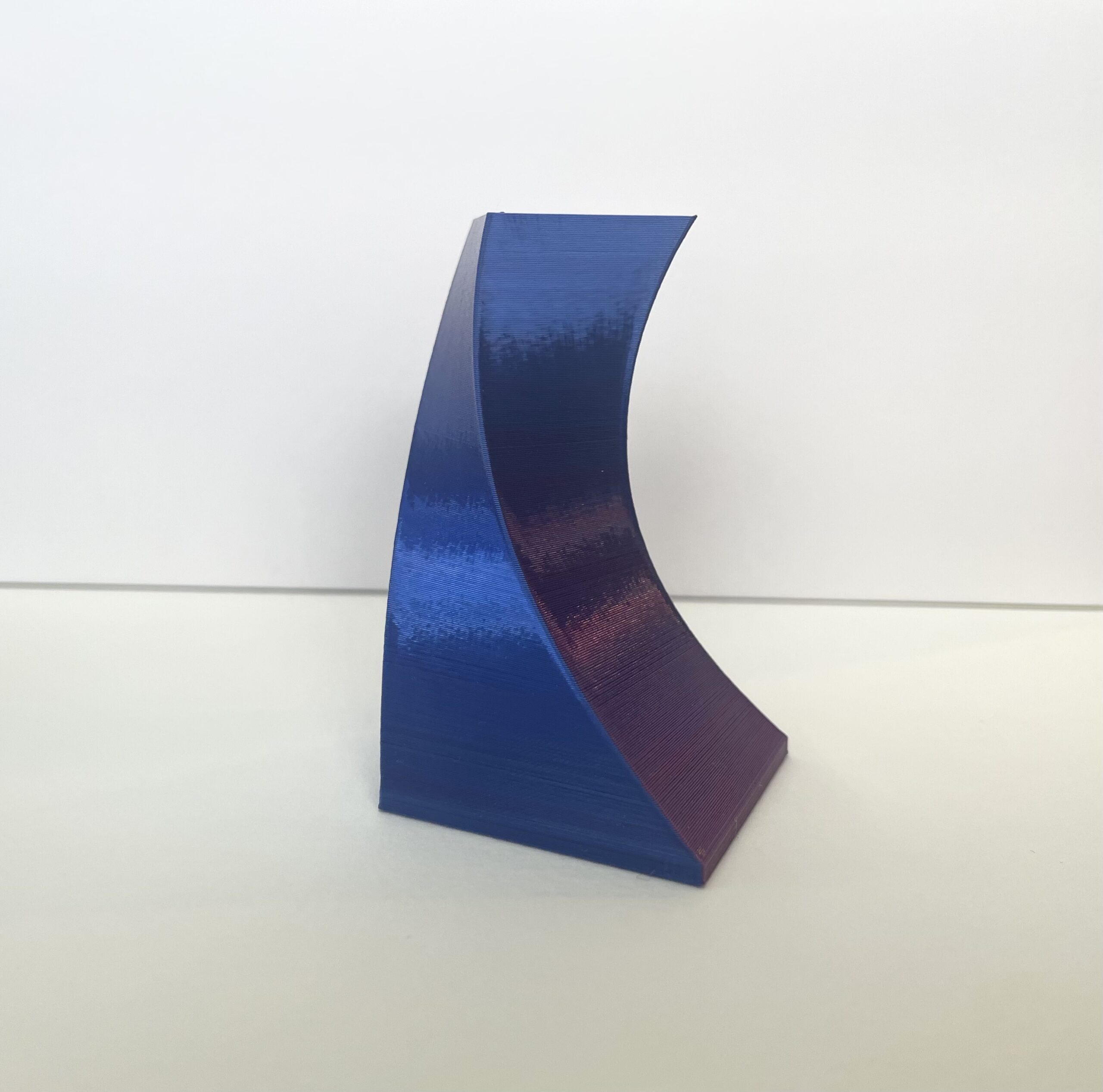
Mid-Print/Printing Process:
***Ignore the dirty plate! Was using glue to keep prints from moving***
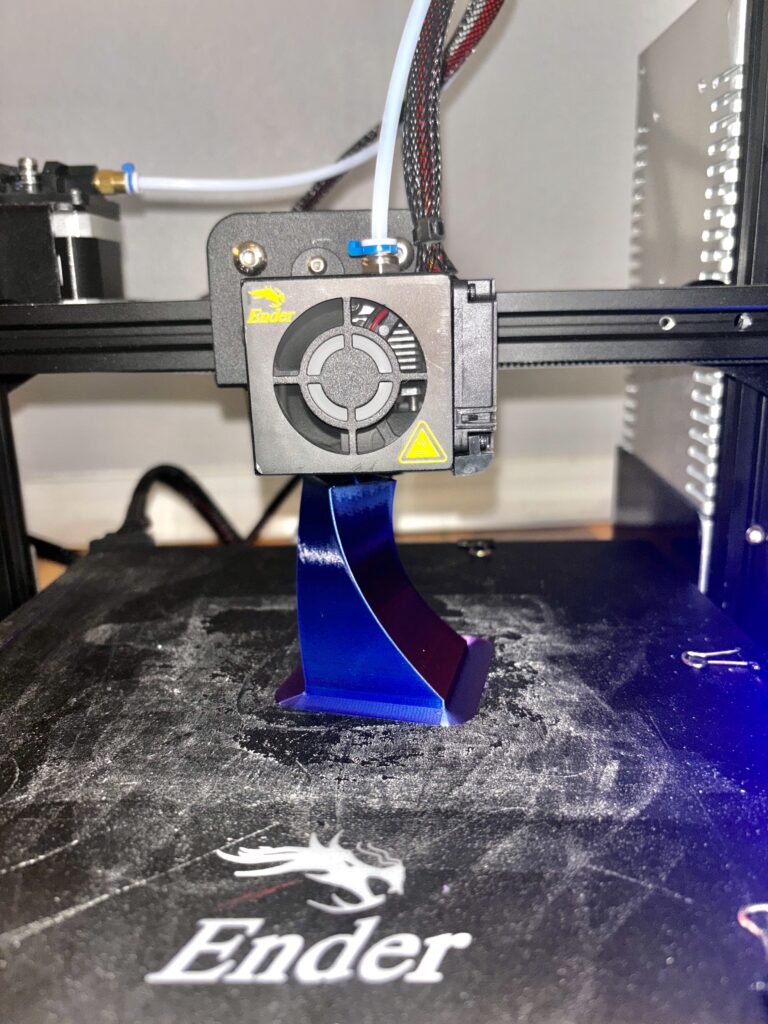
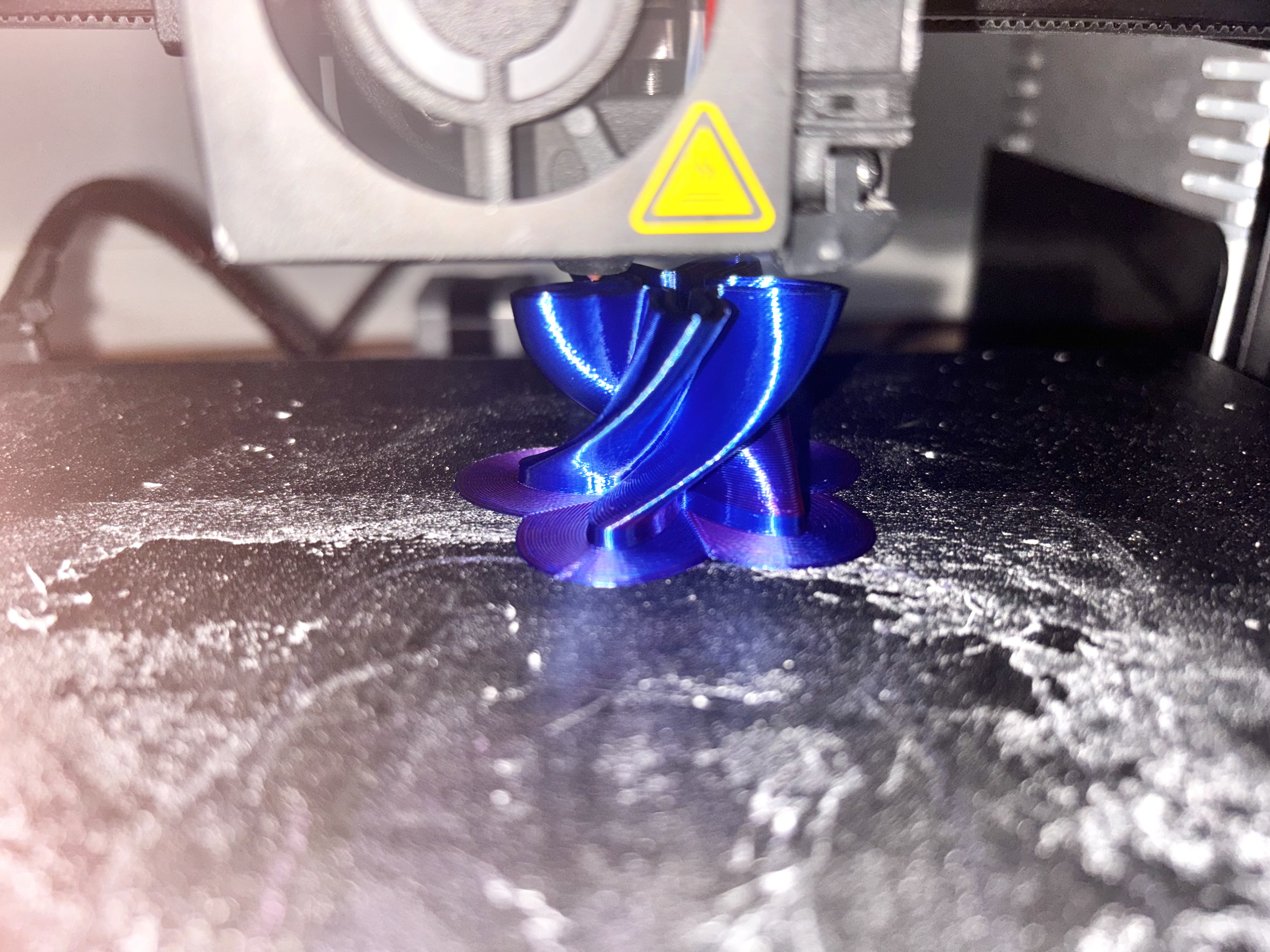
Failed Prints:
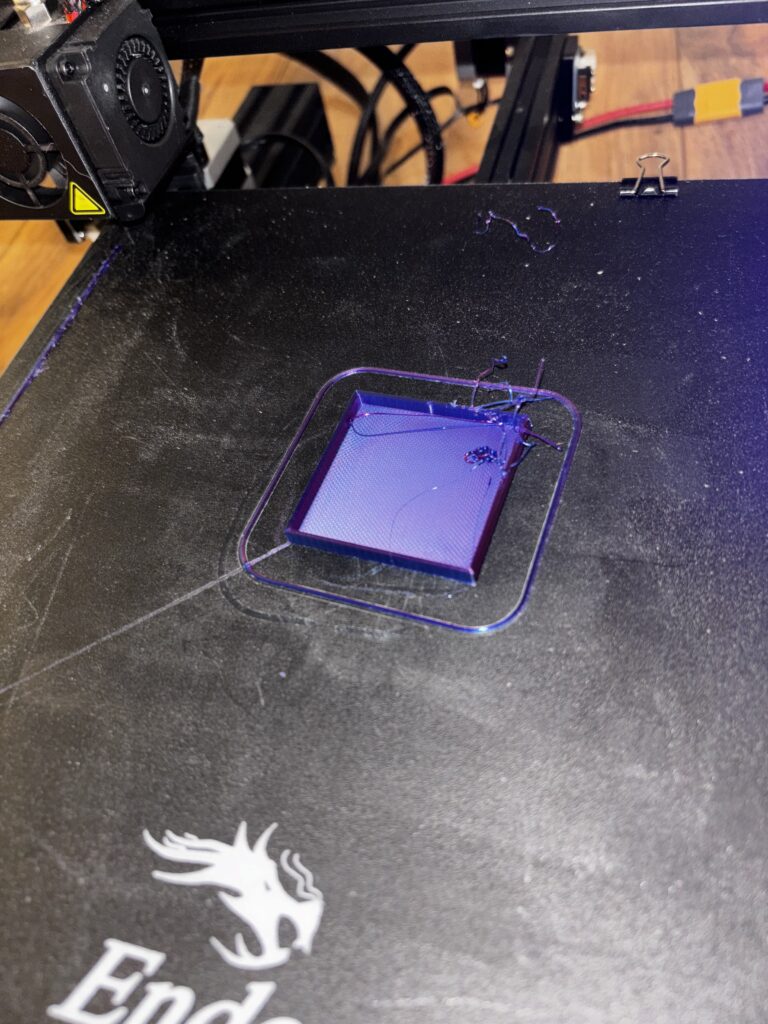
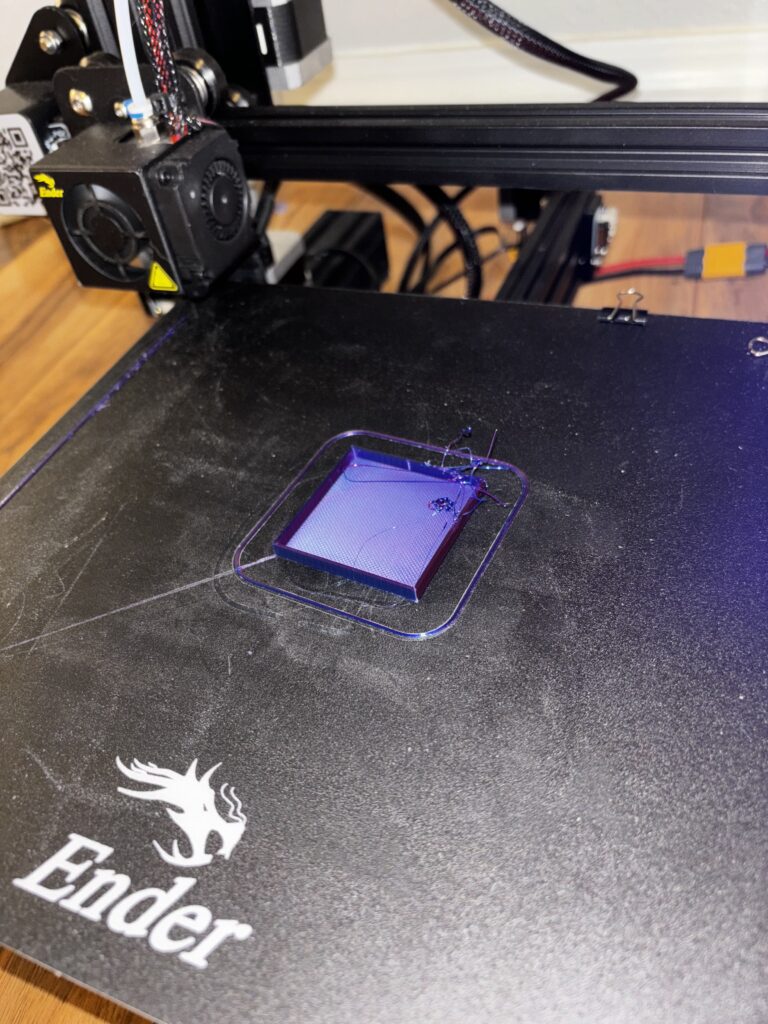
Grasshopper & Rhino:
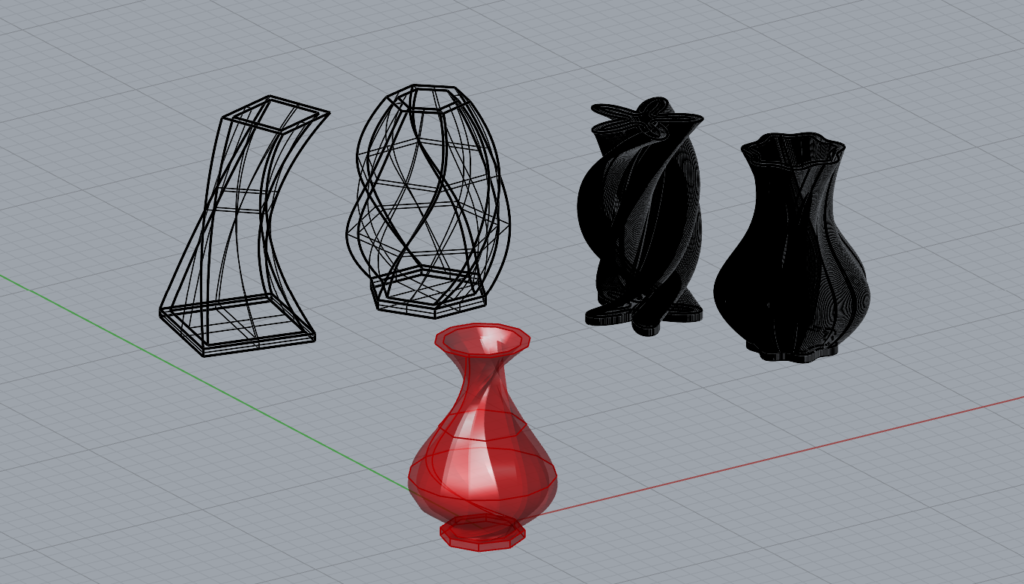

Reflection:
There weren’t any particular inspirations behind each of these models besides my intent to adjust their parameters into an object design that caught my attention. Overall, I had a great time exploring different radial functions, transformation functions, and different inputs to create these vessels. I do feel that some sense of authorship is removed compared to a more traditional design process as it really boils down to experimenting and finding the right parameters that peak our interests or fits the image we were going for (which can be easily and quickly adjusted whereas a more traditional approach doesn’t exactly allow for that same ability). I’m mostly looking forward to learning new ways we can transform and create more complex structures.
The process of creating objects via programming and 3D printing in comparison to building them on your own, whether that be real hands-on-making or designing through Rhino, offers the ability to quickly adjust measurements in a matter of seconds. Attempting to make these changes by hand or manually through Rhino often takes up more time, typically tends to be tedious, and is effort-consuming. Using mathematical equations to create these geometries also offers the ability to construct complex objects that aren’t so feasible through other methodologies. It may also be difficult to achieve exact measurements for curves, transformations, etc. using traditional-making processes. Though it can take effort to program some of these transformations, there is little-to-no work involved once the object has been constructed, exported/imported, and sliced (unless when encountering failed prints like I did). As I had mentioned already, the biggest advantage was the ease of changing dimensions which allowed us to experiment with values to create unusual shapes. I’d say one disadvantage to this process would have to be the attention to details required when passing in the different inputs (such as ensuring correct type hints) and figuring out how to implement some of the functions that we were previously able to do in Rhino through a python block in Grasshopper. Otherwise, I wouldn’t say there are many disadvantages to this approach, at least from what I experienced and noticed thus far.
Grasshopper File:
Hi Desiree,
The vessels you made are very pretty. I’m no art connoisseur, but the first and third vessels you made look rather modernist in my opinion. The second print (with the petals) looks interesting too, kind of abstract. Also, the filament is just perfect! I love its sheen and color.
It is unfortunate that you experienced issues with your printing process. Hopefully you can figure out what the issues are to make trouble free prints in the future.
Thank you, German!
I agree, I do favors those two over my second vessel. I’ve noticed that my choice of filament color seems to be what stands out the most out of my prints. I’m hoping for the same thing as well, it’s no fun when you have to spend a few extra hours trying to figure out where the issue is coming from.
Hi Desiree,
I think your artifacts and the filament you used are both super interesting. I am really confused with how your second vessel printed without supports. I agree that designing with programming is simpler and more consistent than doing it by hand. I am not sure if its just a skill issue, but I found it very difficult to make small changes to rhino objects by hand.
Patrick,
I appreciate your comment. Surprisingly, I was actually more concerned about printing out my third vessel without supports given that it rotates around an axis whereas the others are predominantly grounded by its base directly below it. Working in Rhino by hand is certainly much more tedious, but I think starting our coursework that way makes us appreciate our programs in grasshopper slightly more. Thanks again!